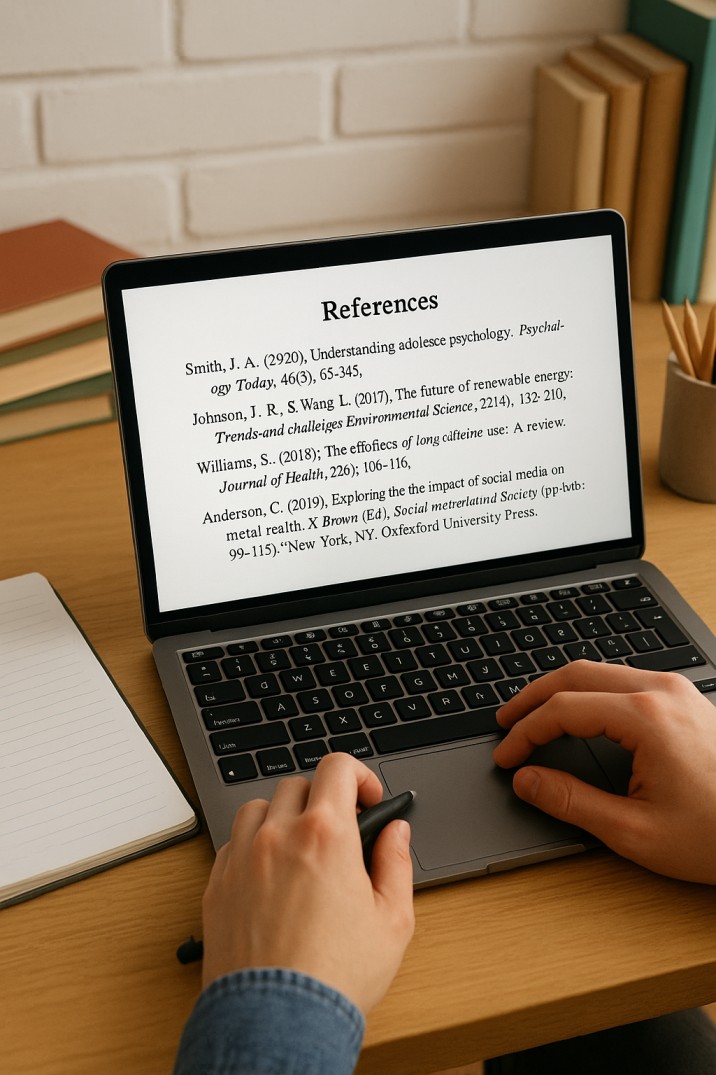
Whether you are in high school, university or studying in the sciences, writing lab reports is an important process in your education. Let’s face it – lab reports can be difficult! Identifying and structuring your results and methods, and concisely expressing these is frustrating enough on its own, but add to that, you might not know if you are on the right track, and this task can seem daunting.
The good news, however, is that lab report writing does not need to be complicated if you take the correct approach. When done properly, lab report writing is not just something you need to put in the effort to finish – it is an exercise in communication and critical thinking! With that said, below we will cover simple ways to write lab reports that are clear, well-structured, and will satisfy the requirements of good science writing.
The Importance of Good Lab Report Writing
A good lab report does more than just report data. It demonstrates your capability to think scientifically, articulate your reasoning, and communicate your results to other people. Lab report writing is one of the most applicable genres of science writing that I can think of – it is used in research and lab-based science in any industry. When your lab report is organized, concise and substantiated; it is a very valuable document for more than just a better grade; it is building professional skills that you will undoubtedly carry for in your career post-graduation.
These are seven practical strategies to help you with lab report writing. By using these strategies, you can create persuasive and professional lab reports.
- Know Why You Are Writing Your Lab Report
Before beginning to write a lab report, you need to know what your instructor or supervisor wants. Are you analyzing data to compare and contrast theories? Or, are you conducting a new experiment? Be clear about your purpose and ensure that every part of your lab report supports the purpose. A focused lab report is much more persuasive and easier to follow.

- Define a Strong Structure
A strong structure is the basis for any good lab report. The structure for science reports is sometimes unique to your course or discipline, however most reports contain some form of this structure:
- Title
- Abstract (a brief summary of the purpose, methods, results, and conclusion)
- Introduction (background and hypothesis)
- Materials and Methods (the materials you used, and how you did it)
- Results (the result – often in tabular or graphical form)
- Discussion (analysis and interpretation of results)
- Conclusions (summary and implications)
- References (used throughout your project)
Having a structured report will not only help with clarity, but it will give a clear direction to ensure that your report meets the expectations for academic writing in the sciences.
- Be Clear and Direct
Scientific writing is focused on clarity. Flowery language is not acceptable; simply report the facts. Whereas you might say, “The solution, rather unexpectedly, changed colour,” you will write,” The solution changed colour from blue to green in 10 minutes.” Avoid using passive voice where possible when writing in scientific reports – active voice is preferable to increase clarity.
- Use Visuals Appropriately
Graphs, tables, and figures can all help enhance your lab report writing, presenting your data in a format that is more easily digested by the reader. When using visuals, ensure to:
- Clearly label them
- Provide a title and unit of measure
- Refer to them in the text of your report
Avoid using too many visuals. Use visuals when they truly add to the understanding of the report.
- Offer Objectivity and Avoid Bias
A good practice in science writing is to be objective, even if the data does not agree with your predictions. You can’t reshape the data to align with your predictions. What you can do, however, is report why your results were not what you expected, and what you might do differently in future experiments.
- Cite Sources
Plagiarism is not acceptable behaviour in academia or any workplace. Be aware of your field’s citation style, including APA and MLA styles (use a different style if instructed), and always use credible sources. Provide a list of references at the end of your report and proper in-text citations when necessary.

- Proofread, Edit, and Review
One of the most neglected steps in writing a lab report is the final review. You should run your lab report through a proofreading tool that will correct grammar and punctuation and clarity issues. You should also double check all data, equations, and scientific terms. Having a peer or instructor read through the lab report is also a super helpful step.
Conclusion: It’s All About Clear Communication
At the end Lab Report Writing isn’t just about completing a task by following a certain structure or a template, the goal of Lab Report writing is to communicate the story of an experiment so that it can be understood and learned by others. Whether your data did or did not fit your original hypothesis, the important point here is how well you communicated the process, the observations, and your learnings.
Good science writing should not be complex, it should reflect clarity, honesty and should be well organized. This will not only help you in improving your ability in writing a lab report, but also it will improve you as a scientific thinker and communicator.
References
- https://peer.asee.org/4343.pdf
- https://pubs.acs.org/doi/abs/10.1021/acs.jchemed.3c00651
- https://journals.asm.org/doi/abs/10.1128/jmbe.v16i1.884
- https://peer.asee.org/32951.pdf
FAQs on Lab Report Writing
1. What is lab report writing?
Lab report writing is the process of documenting an experiment in a structured format that includes sections like the introduction, methodology, results, and conclusion. The goal is to communicate findings clearly so others can understand, verify, or replicate the experiment.
2. Why is lab report writing important in academics?
Lab report writing is important because it helps students and researchers organize their observations, analyze data logically, and present results in a professional way. It also demonstrates critical thinking and the ability to apply scientific methods.
3. What are the main components of a lab report?
A complete lab report usually includes:
Title and Abstract – brief overview of the experiment.
Introduction – purpose and hypothesis.
Materials and Methods – how the experiment was conducted.
Results – raw data, tables, and graphs.
Discussion – interpretation of results.
Conclusion – summary of findings.
References – cited sources.
This structure ensures your lab report writing is clear and professional.
4. How can I make my lab report writing more effective?
To make lab report writing effective, be concise, focus on accuracy, and use visuals like graphs or charts when necessary. Proofreading is also essential because grammar mistakes can weaken credibility.
5. What is the biggest mistake students make in lab report writing?
The most common mistake in lab report writing is describing results without analysis. Students often include data but fail to explain what it means. Another mistake is writing subjectively—lab reports should remain objective and fact-based.
6. How do I write a good introduction in lab report writing?
A good introduction sets the stage by explaining the background of the experiment, the purpose, and the hypothesis. In lab report writing, the introduction should answer why the experiment was conducted and what the researcher aimed to discover.
7. Should I include visuals in lab report writing?
Yes, visuals are highly recommended. In lab report writing, tables, graphs, and charts make complex data easier to interpret. Just ensure visuals are properly labeled and referenced in the text.
8. How long should a lab report be?
The length of lab report writing depends on the complexity of the experiment. A short classroom experiment may only need 3–5 pages, while a detailed research project could be 10–20 pages. The key is quality over quantity.
9. What writing style should I use for lab report writing?
Lab report writing should use clear, direct, and formal academic language. Avoid personal opinions or emotional expressions. Passive voice is commonly used in scientific writing (e.g., “The solution was heated” instead of “I heated the solution”).
10. How do I ensure objectivity in lab report writing?
To ensure objectivity, present data exactly as observed, without exaggerating or manipulating results. In lab report writing, always support claims with evidence, avoid personal bias, and remain neutral in tone.
11. How do I cite sources in lab report writing?
Citing sources is crucial in lab report writing to avoid plagiarism and acknowledge references. Common styles include APA, MLA, or Chicago. Check your instructor’s requirements before finalizing citations.
12. Can AI tools help in lab report writing?
AI tools can assist in grammar checks, formatting, and creating visuals, but lab report writing should remain authentic. The experiment’s observations, results, and analysis must be written by the student to reflect real understanding.
13. How do I improve clarity in lab report writing?
Improving clarity means using simple sentences, organizing data logically, and avoiding unnecessary jargon. In lab report writing, clarity ensures readers can easily follow your thought process.
14. What should I check while proofreading my lab report?
When proofreading lab report writing, check for grammar errors, data accuracy, proper labeling of visuals, and consistent formatting. Make sure references are correct and conclusions align with results.
15. How can good lab report writing help in future careers?
Strong lab report writing skills are valuable in fields like research, medicine, engineering, and academics. They show employers that you can analyze data, present findings, and communicate technical information effectively.
Penned by Riya Singh
Edited by Ragi Gilani, Research Analyst
For any feedback mail us at [email protected]
Transform Your Brand's Engagement with India's Youth
Drive massive brand engagement with 10 million+ college students across 3,000+ premier institutions, both online and offline. EvePaper is India’s leading youth marketing consultancy, connecting brands with the next generation of consumers through innovative, engagement-driven campaigns. Know More.
Mail us at [email protected]
Penned by Names
Edited by Ritika Sharma, Research Analyst
For any feedback mail us at [email protected]
Transform Your Brand's Engagement with India's Youth
Drive massive brand engagement with 10 million+ college students across 3,000+ premier institutions, both online and offline. EvePaper is India’s leading youth marketing consultancy, connecting brands with the next generation of consumers through innovative, engagement-driven campaigns. Know More.
Mail us at [email protected]
Penned by Names
Edited by Ritika Sharma, Research Analyst
For any feedback mail us at [email protected]
Transform Your Brand's Engagement with India's Youth
Drive massive brand engagement with 10 million+ college students across 3,000+ premier institutions, both online and offline. EvePaper is India’s leading youth marketing consultancy, connecting brands with the next generation of consumers through innovative, engagement-driven campaigns. Know More.
Mail us at [email protected]